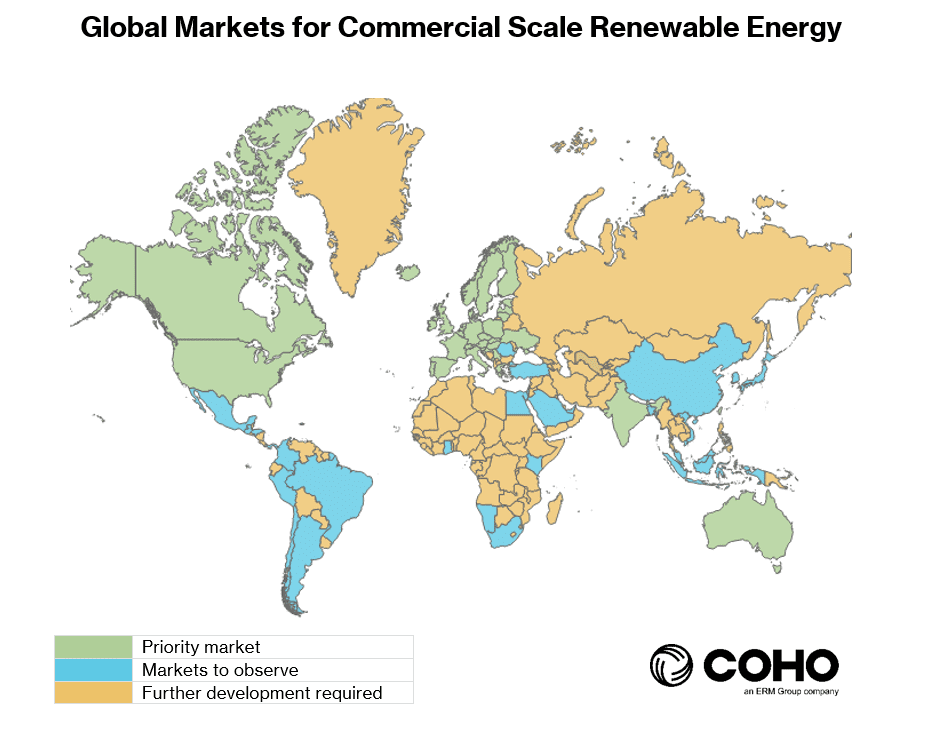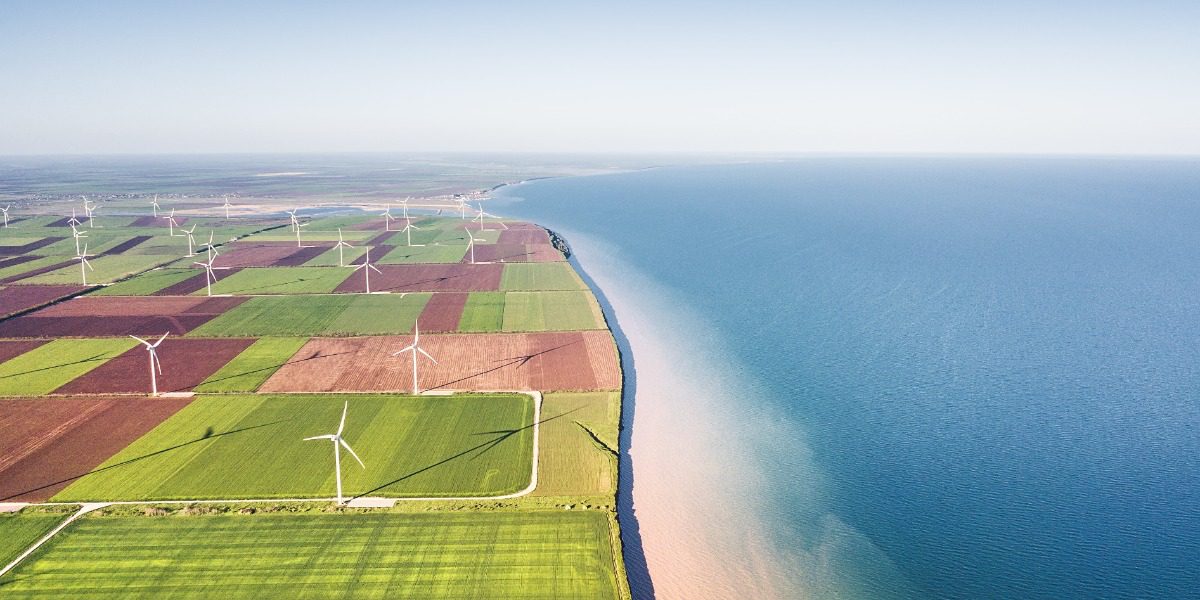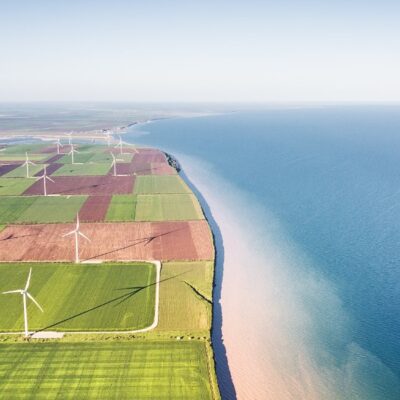For impact across your global portfolio, these are the top renewable energy markets to consider.
If your organization has a global footprint, it can be difficult to decide where to start procuring renewable energy. We’ve mapped out what Coho believes are the top renewable energy markets today to consider for medium to large scale renewable procurement, to make significant impact across an international portfolio.
Clean Energy Market Classification
We classify each country’s renewable energy market in one of three categories:
- Priority market: Large-scale solutions in region or capability for cross-border claims; smaller local solutions also available
- Markets to observe: Recent renewable development with large-scale solutions becoming more widely available
- Further development required: Large-scale renewable options unavailable or unclear; limited local solution availability

Summary of Clean Energy Markets by Region
North America
The US and Canada have some of the most developed markets for renewable energy worldwide. Opportunities may differ by province or state, but there are likely to be many options to address electrical load in both countries. Economics range from cost additive to savings compared to the cost of purchasing renewable energy credits (RECs), with some structures, like power purchase agreements (PPAs), offering savings compared to brown power. (Though, there are also risks of financial loss.)
Europe
Most EU countries have highly developed renewable energy markets, with Spain being the largest PPA market in Europe with 3.2GW contracted in 2022. Europe operates under an environmental credit trading scheme guided by the Association of Issuing Bodies (AIB). AIB member countries typically have more available solutions, such as allowing siting projects in one country and transferring claims to others through cross-border VPPAs. This makes it possible to procure a VPPA in a country like Spain to address goals across your European portfolio.
Asia Pacific
Asia is one of the fastest growing renewable energy markets, contributing almost half of all new renewable capacity in 2022. Many countries in the region have set goals and are working to address regulatory hurdles to enable further development. Most markets are new to corporate purchasing given traditional state control of the power sector. India was one of the first to open a competitive system, and now leads in total renewable capacity. Taiwan and Australia show strong growth as well. Those top three countries together comprise about 90% of Asia’s overall capacity.
South & Central America
Corporate purchasing in Latin America is limited, due to legislative restrictions, as well as many countries already boasting high percentages of renewable generation on the grid. For example, Brazil, Costa Rica, and Uruguay are almost 100% renewable. However, there is still significant potential for new projects; Latin America has the largest pipeline of solar power in development, and demand is growing. As free markets expand, corporate buyers should take advantage of generous supply and decreasing costs.
Africa and the Middle East
Africa holds the most solar resource potential globally, and therefore offers significant renewable opportunity. However, strict licensing requirements and net metering restrictions currently limit corporate action, so further investment and regulatory reform is required to unleash the continent’s potential. VPPAs are becoming more common, with Morocco, Egypt, and South Africa hosting numerous examples of large C&I (commercial and industrial) purchases.
Other Considerations
Opportunities will of course depend on your organization’s specific electricity purchasing situation, but these general trends can provide a starting point. Aside from the most advanced renewable energy market, there may be other factors to consider in your renewable strategy, including:
- Load Centers: Where is the majority of your organization’s energy consumed?
- Emissions: Where could renewable energy have the largest impact on emissions reduction? This may overlap with load centers, depending on the relative abundance of fossil fuels in each grid.
- Cost: Where would renewable energy offset the most cost for your organization?
- Climate goals: What are your organization’s climate and renewable energy goals, and do they mesh with the priorities of internal stakeholders, including cost, project location, and environmental impacts?
Coho’s team has deep experience designing and implementing renewable energy programs across the globe, and we’d be happy to help you reach your international goals.


